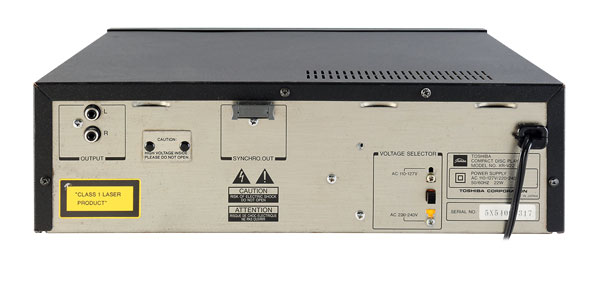Toshiba XR-V22 CD player Page 3

Tim Listens
Before hearing the XR-V22 I imagined it would have a hard, glassy, brittle sound as it lacks many of the refinements found in more sophisticated designs. In reality it’s quite soft and smooth in character. Nevertheless, while neither Philips nor Marantz were likely troubled by the competition, compared to the hard-edged XR-J9 this one’s certainly easier on the ear.
The bass is dry, the treble slightly muted and there’s plenty of detail in the middle, but where the design falls down is stereo projection and imaging, both of which are limited by the use of the time-shared DAC and its attendant high-slope analogue filtering. Like everything else in the XR-V22, the filters are of Toshiba’s own design and while they do not appear very sophisticated the overall result is an improvement over the sound of earlier Japanese players, such as the Sony CDP-101.
Listening to Holst’s Planets Suite [DG 445 860-2] left me with mixed feelings about this early Toshiba design. In its favour it is a notably relaxing player to listen to, especially at moderate levels. Where many of its Japanese rivals were brash and bright, this sounds delicate, gentle and essentially neutral across the midband. The trade-off is a limited ability to project a sense of scale – often players that exhibit less extended treble give the impression of bass warmth, but not this one. The larger instruments in the orchestra sounded distant and lacking heft, even when played at a realistic concert volume. The quieter passages, such as those found in ‘Neptune’, were reproduced with a delicacy few Japanese players of this period can better but, overall, I was never quite able to close my eyes and imagine I was at the concert.
One aspect I did appreciate, though, is that despite the complexity of its internal workings, the XR-V22 is mechanically near silent, something you can’t say about every CD player.
The first Dire Straits live album Alchemy [Vertigo 9848805] is spread across two discs, but that doesn’t matter with this player of course. The more dynamic style brought the XR-V22 out of its shell, the percussion in particular being well rendered with just enough prominence to sound convincing.
True, I had to push the speakers further into the corners of my listening room to get the bass to match, but once this was done I didn’t want to get up again until the second disc was finished. The stereo imaging remained limited in its accuracy (not helped by my moving the loudspeakers) but the sense of focus was superb – better to my ear that some of this player’s more technically sophisticated rivals.

Connections at the rear do not come any simpler – just a pair of line outputs on RCAs and a multi-pin ‘synchro out’ for connection within a Toshiba audio system
Buying Secondhand
The XR-V22 was never a particularly popular model so can be difficult to find. Many have now fallen into disrepair and no longer work, but luckily this is not always for terminal reasons. The weak points in this design are the numerous drive belts that operate the drawers and the slide traverse. Access is not especially easy as all the electronics are on a large single PCB that has to be removed first, but the mechanisms beneath are mostly quite simple and easy to deal with. Suitably sized O-rings will serve as good replacements for the belts.
Be aware that models like this were favoured as a source of background music and so may have been used for many hours by the original owner. This can take its toll on the laser which is a special type and not available as a replacement part. Luckily though they are more durable than many so the chances of finding a good one are still favourable, perhaps in a scruffy donor machine if necessary.
The XR-V22 is a landmark design and essential for serious collectors of early CD equipment. But what about the general vintage hi-fi fan? Toshiba’s take on how CD should sound may not suit all, but it’s the result of well-considered work. A cautious thumbs-up then for those tired of more obvious alternatives.
Hi-Fi News Verdict
Is this, perhaps, a basic CD player with an excellent party trick? Maybe, but if you find traditional players to sound overly-energetic and overblown then this could be the answer. In any case it’s another ‘first’ and something that deserves not to be forgotten if only because it was ahead of its time, predating the 5-6 disc carousel and magazine-loading players by some years. Oh to have had one when they were new!
Sound Quality: 75%


















































